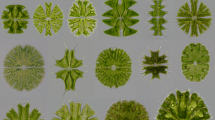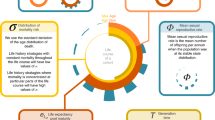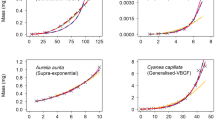Abstract
IN 1924 in this journal, Huxley1 first considered the relation between the growth of parts in a living organism, when the parts increase or decrease in relative size. The equation log y = log b + k log x describes the process, where y is the size of the part, x the size of the whole, and b and k are constants (the former giving the fraction of x which y occupies when x is unity, and the latter the ratio of the growth-rate of the part to the growth-rate of the whole). Thus on a double logarithmic grid, straight lines are obtained, the slope of which is determined by the constant k, and the absolute position of which relative to the axis values, by the constant b. Since Huxley's first paper, this simple relation has been abundantly verified for morphological magnitudes in a large number of animals, vertebrate and invertebrate, as described in his recent book.2
This is a preview of subscription content, access via your institution
Access options
Subscribe to this journal
Receive 51 print issues and online access
$199.00 per year
only $3.90 per issue
Buy this article
- Purchase on Springer Link
- Instant access to full article PDF
Prices may be subject to local taxes which are calculated during checkout
Similar content being viewed by others
References
Huxley, J. S., NATURE, 114, 895, Dec. 20, 1924.
Huxley, J. S., "Problems of Relative Growth", London, 1932.
D'Arcy Thompson, W., "Growth and Form", Cambridge, 1917.
Author information
Authors and Affiliations
Rights and permissions
About this article
Cite this article
NEEDHAM, J. Heterogony and the Chemical Ground-Plan of Animal Growth. Nature 130, 845–846 (1932). https://doi.org/10.1038/130845b0
Issue Date:
DOI: https://doi.org/10.1038/130845b0
This article is cited by
Comments
By submitting a comment you agree to abide by our Terms and Community Guidelines. If you find something abusive or that does not comply with our terms or guidelines please flag it as inappropriate.



